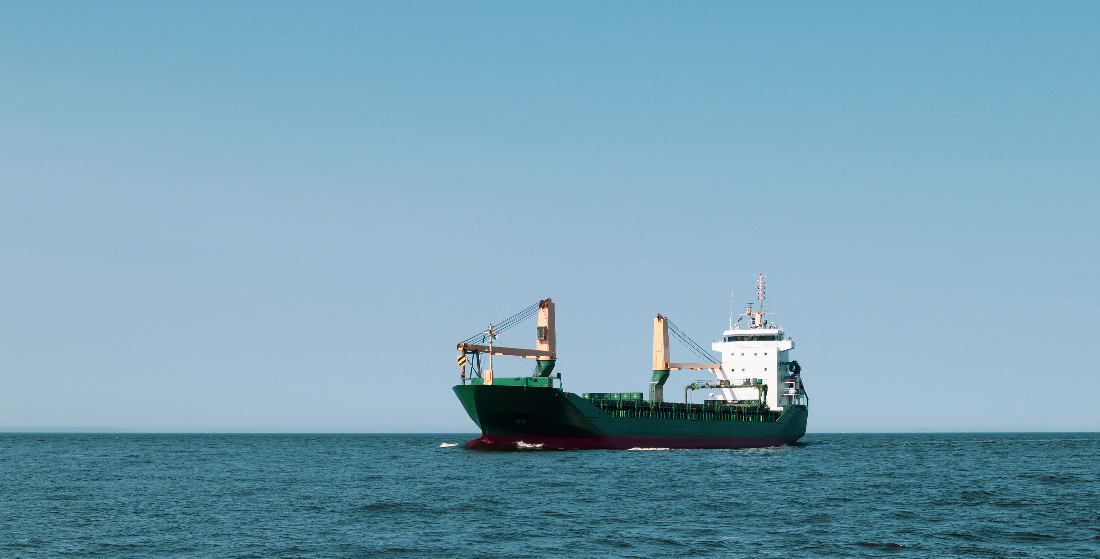Greener, cleaner trade finance requires streamlined vessel and transaction screening
The regulatory drive to reduce maritime carbon emissions is triggering a wave of innovation in green trade finance, but unless banks, lenders and carriers have accurate, real-time sustainability monitoring of vessels, these important initiatives will struggle to get going, says Simon Ring, global head of maritime trade technologies & ESG, at Pole Star

 The intensifying pressure on global transport networks to reduce carbon emissions is now having a significant effect on trade finance.
The intensifying pressure on global transport networks to reduce carbon emissions is now having a significant effect on trade finance.
Governments and regulators expect banks and lenders to incorporate ESG (environmental, social, and governance) standards into their operational and financial decision-making processes, affecting how shipping companies obtain finance. The push for increased sustainability is leading to preferential financing rates for transactions that are transparently green and clean. Charterers and operators showing evidence of their compliance will, therefore, have a distinct advantage.
This pressure increases with every bout of extreme weather and every new climate change report, putting the spotlight on the maritime sector’s three per cent contribution to global greenhouse emissions. The EU has already included shipping in its Emissions Trading System (ETS), as part of its determination to reduce carbon emissions by 55% by 2030 (compared with 1990) while the IMO is aiming for a 40% reduction by 2030 against a 2008 benchmark.
The problem for the overworked risk, compliance and legal departments of banks and lenders, of course, lies in obtaining accurate, real-time intelligence and information about vessels, their respective compliance and sustainability status and routes. Even more complex is the ability to quantify the environmental impact of the commodity that a vessel is transporting. Charterers and operators, on the other hand, need more advanced digital solutions to not only make better, greener decisions, but also to demonstrate they are taking steps to achieve compliance.
Nobody should be in doubt about the seriousness of emissions reductions targets around the globe. China, Japan, and South Korea are all pushing their economies towards carbon-neutrality. In the US, the Biden administration has also announced it will now collaborate with the IMO on emissions reductions.
New opportunities and more favourable rates
While these targets and regulations seem onerous, the drive for sustainability is stimulating the development of trade finance mechanisms closely linked to performance against carbon emissions targets.
In the near-future, the use of vessels with superior environmental ratings will earn preferential financing terms for charterers, which are likely to be significant. Carriers with a green track record will also be viewed more favourably when they seek to finance the acquisition of vessels or expand their businesses. In addition, ports will charge lower registry fees if carbon-efficiency complies with best practice, not just the basic requirements. Insurers and flag administrations are likely to follow suit.
Early steps and their drawbacks
The Poseidon Principles, launched in June 2019, are an attempt to connect ship financing with environmentally-friendly behaviour and decarbonisation. Applicable to lenders, lessors, and financial guarantors including export credit agencies, they have established a global baseline in relation to climate goals.
The Poseidon Principles Association employs a ‘decarbonisation trajectory’ according to ship type, size, technical and operational specification, representing how many grammes of CO2 a ship emits to move a tonne of goods one nautical mile in line with the IMO’s threshold.
However, benchmarks that use annual evaluations to assess vessels’ carbon output omit crucial activity that occurred within that timeframe, including choice of fuels, retrofitting, speed and routes used. What the industry needs is real-time, detailed information about the current status of a vessel. Regulation is changing rapidly and operators and charterers need to show they have kept up.
Real-time access to carbon-screening
The only way to achieve this cost-effectively and comprehensively is to employ technology to automate the monitoring of emissions along the supply chain. If charterers, operators and banks can build this into their current infrastructure and systems, they will have a solution for the long term.
Carbon emissions measurement is now conducted by expert companies using recognised techniques. Their outputs provide high-quality data that digital monitoring solutions integrate into existing system workflows. This enables banks and charterers to rate a vessel, its peer group and its carbon tonne per mile within a matter of seconds, while also producing an essential audit trail. Legal, risk and compliance departments use the audit to review a transaction, saving time and providing access to expertise in carbon screening.
End-to-end, holistic monitoring for everyone in the maritime sector
Banks also need to see evidence of sustainability in the entire transaction, including the cargo. They should be able to screen each commodity transaction for environmental impact across a range of real-time indicators encompassing climate effect, human exploitation, soil erosion, deforestation and water productivity.
In fact, the whole industry and its hinterland need greater transparency so all interested parties can rate vessels meaningfully. That applies to governments, flags and ports, commodity producers and traders as well as logistics companies, forwarders and carriers.
For financing institutions, screening vessels, carriers and charterers for their ESG credentials should be an integral part of due diligence alongside automated processes that conduct critical sanctions and money laundering compliance checks. Banks can use easily-integrated technology to assess their entire trade finance portfolio and identify transactions that expose them to risk, quickly adapting to future changes in regulations, taxes, and potential penalties for carbon emissions.
As governments and regulators move to reduce emissions from shipping, banks must use technology to facilitate the growth of green, sustainable trade finance. Operators and charterers likewise need to demonstrate they are making every effort to comply with the latest regulations on carbon emissions. The only certain way to achieve this without a huge administrative burden is through automation and integration of ESG monitoring into systems and workflows. It is an advance the whole maritime industry should embrace so that the sector becomes more sustainable, more transparent and more efficient.





